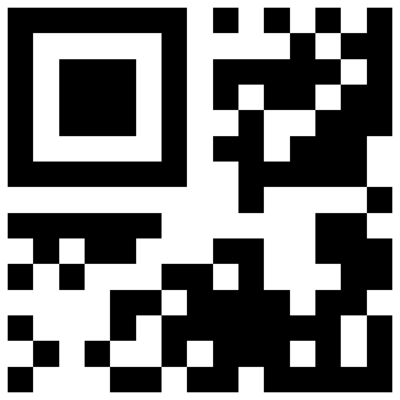Difference between revisions of "Example Render Micro QR Code"
From BoofCV
Jump to navigationJump to search (Created page with "<center> <gallery widths=400px heights=400px> File:Example_render_microqr.png | The Micro QR Code which is rendered in this example. </gallery> </center> This example shows h...") |
m |
||
| Line 8: | Line 8: | ||
Example Code: | Example Code: | ||
* [https://github.com/lessthanoptimal/BoofCV/blob/v0.40/examples/src/main/java/boofcv/examples/fiducial/ExampleRenderMicroQrCode.java ExampleRenderMicroQrCode.java] | * [https://github.com/lessthanoptimal/BoofCV/blob/v0.40.1/examples/src/main/java/boofcv/examples/fiducial/ExampleRenderMicroQrCode.java ExampleRenderMicroQrCode.java] | ||
Concepts: | Concepts: | ||
| Line 37: | Line 37: | ||
// NOTE: The final function you call must be fixate(), that's how it knows it's done | // NOTE: The final function you call must be fixate(), that's how it knows it's done | ||
// | // Render the QR as an image. It's also possible to render as a PDF or your own custom format | ||
GrayU8 rendered = MicroQrCodeGenerator.renderImage(/* pixel per module */ 10, /* border modules*/ 1, qr); | |||
// Convert it to a BufferedImage for display purposes | // Convert it to a BufferedImage for display purposes | ||
BufferedImage | BufferedImage output = ConvertBufferedImage.convertTo(rendered, null); | ||
// You can also save it to disk by uncommenting the line below | // You can also save it to disk by uncommenting the line below | ||
// UtilImageIO.saveImage( | // UtilImageIO.saveImage(output, "microqr.png"); | ||
// Display the image | // Display the image | ||
ShowImages.showWindow( | ShowImages.showWindow(output, "Rendered Micro QR Code", true); | ||
} | } | ||
} | } | ||
</syntaxhighlight> | </syntaxhighlight> | ||
Latest revision as of 12:00, 24 January 2022
This example shows how a Micro QR Codes can be rendered into an image. Its easy to adapt the approach here for just about any file format, e.g. PDF.
Example Code:
Concepts:
- Fiducials
- Micro QR Codes
Relevant Examples/Tutorials:
Example Code
/**
* A simple API is provided for creating your own Micro QR Code. Used extensively in BoofCV for testing purposes.
* It's also easy to extending the rendering tools to support other file formats.
*
* @author Peter Abeles
* @see boofcv.alg.fiducial.microqr.MicroQrCodeGenerator
*/
public class ExampleRenderMicroQrCode {
public static void main( String[] args ) {
// Uses a flow pattern to specify the QR Code. You can control all aspects of the Micro QR
// like specifying the version, mask, and message types or let it select all of that for you.
MicroQrCode qr = new MicroQrCodeEncoder().
setError(MicroQrCode.ErrorLevel.L).
addAutomatic("Test ん鞠").fixate();
// NOTE: The final function you call must be fixate(), that's how it knows it's done
// Render the QR as an image. It's also possible to render as a PDF or your own custom format
GrayU8 rendered = MicroQrCodeGenerator.renderImage(/* pixel per module */ 10, /* border modules*/ 1, qr);
// Convert it to a BufferedImage for display purposes
BufferedImage output = ConvertBufferedImage.convertTo(rendered, null);
// You can also save it to disk by uncommenting the line below
// UtilImageIO.saveImage(output, "microqr.png");
// Display the image
ShowImages.showWindow(output, "Rendered Micro QR Code", true);
}
}
